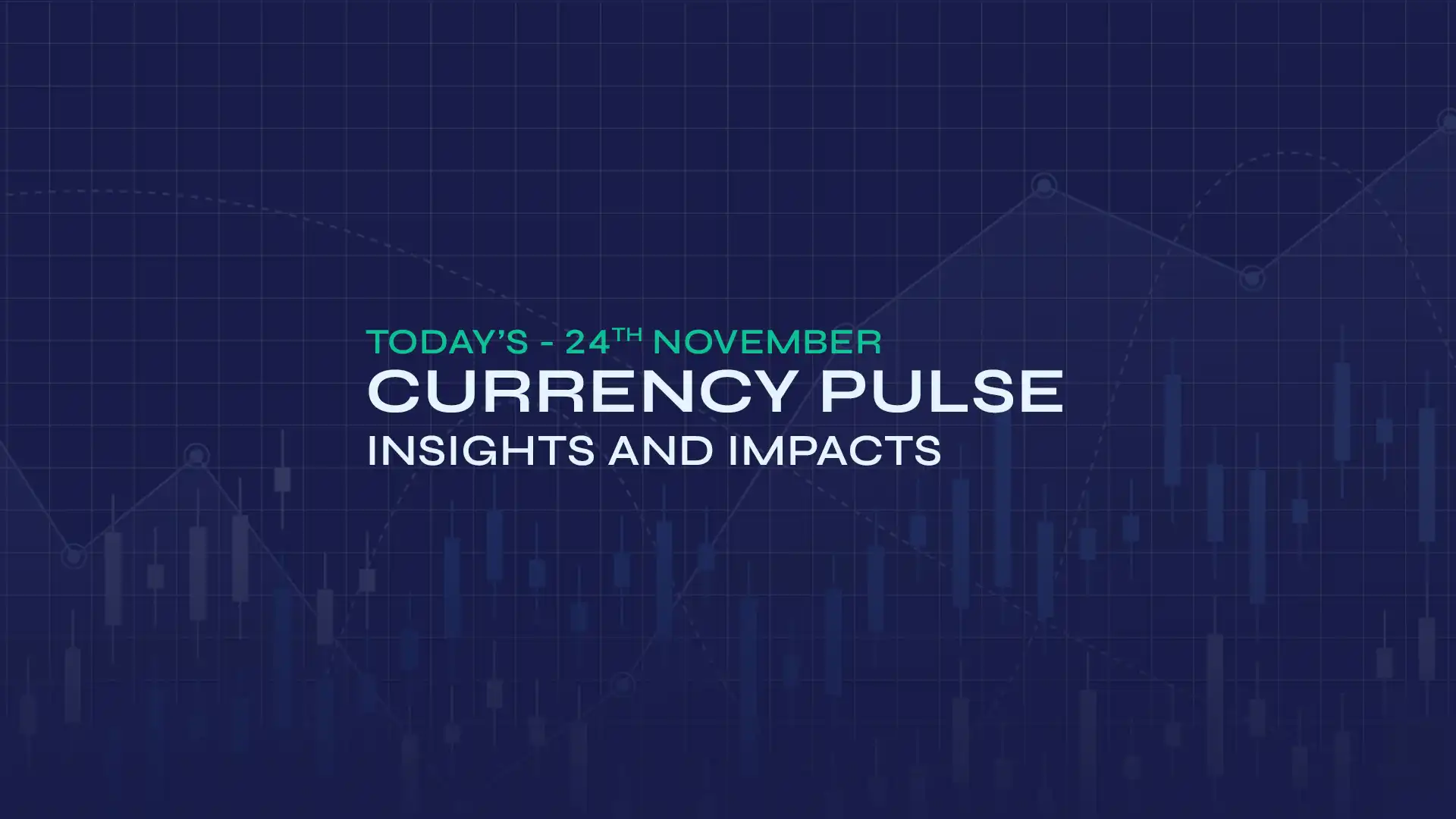EUR/GBP climbed to 0.8595, following Bank of England (BoE) Governor Andrew Bailey warning about downside risks to the UK labour market and noting that firms are hesitant to speed up investment decisions due to global economic uncertainty. "Internationally, there is an increase in uncertainty, which is reflected in economic activity and growth," Bailey said. He mentioned that the labour market is "softening" and explained that, during discussions with businesses, "what they tell me is that they are putting off investment decisions." At the ECB summit, Bailey did not provide hints about potential interest rate changes in the August monetary policy meeting but reiterated that interest rates are expected to continue gradually decreasing. Meanwhile, traders anticipate the BoE will cut interest rates twice more this year. The UK economy regained momentum in Q1, with final GDP figures from the Office for National Statistics showing a 0.7% increase quarter-on-quarter and a 1.3% rise year-on-year. The S&P Global UK Manufacturing PMI increased to 47.70 in June, up from 46.40 in May 2025. Real household disposable income dropped by 1.0%, the steepest decline since early 2023, due to rising prices and taxes reducing consumer spending capacity. The household saving ratio also declined to 10.9% from 12.0%, indicating that savings were being used to support spending.
On the Euro front, the recent Eurozone Consumer Price Index (CPI) report indicated that inflation remains steady near the ECB's target, providing support to the euro. The HCOB Eurozone Manufacturing PMI slightly increased to 40.5 in June 2025 from 49.4 the previous month, revised slightly upwards from the flash estimate of 49.4, but still remained significantly below the initial forecast of 49.8. The Eurozone Harmonised Index of Consumer Prices (HICP) rose by 2% annually in June, following a 1.9% increase in May, in line with market expectations. The core HICP grew 2.3% year-on-year in June, matching May's figure and meeting forecasts. On a monthly basis, the bloc's HICP inflation was 0.3% in June, up from 0% in May. The core HICP increased by 0.4% month-on-month in the same period, following no change in May. On Monday, Germany's Federal Statistical Office announced that import prices fell by 1.1% year-on-year in May, exceeding the market expectation of 0.8%. Germany's initial consumer price figures for June are expected to show a slight increase, with a 0.2% monthly rise and a 2.2% annual rate, compared to 0.1% and 2.1% respectively in the previous month. Inflation in Germany, as measured by the Consumer Price Index (CPI), edged lower to 2% in June from 2.1% in May, according to Destatis' flash estimate on Monday. The monthly CPI remained unchanged, compared to market expectations of a 0.2% increase. The Harmonised Index of Consumer Prices in Germany, the European Central Bank's preferred inflation measure, declined to 2% annually after rising 2.1% in May. This reading was below the analysts' estimate of 2.2%. The HCOB Italy Manufacturing Purchasing Managers Index dipped to 48.4 in June from 49.2 in May.
On Tuesday, Boris Vujčić from the European Central Bank (ECB) warned that the bank might encounter new inflation shocks. He also said that increased defence spending could somewhat add to inflation pressures. Pierre Wunsch, another ECB policymaker, stated that if a policy adjustment is needed, it would likely be downward. Gediminas Šimkus remarked that he isn't sure if enough information will be available by September, but remains open to all possibilities, believing any moves, if they happen, are more probable towards the end of the year. Meanwhile, Governing Council member Jose Luis Escriva stressed that the ECB's main goal should continue to be a symmetric 2% inflation target. ECB's de Guindos responded to the "brutal uncertainty," suggesting that growth in Q2 and Q3 might stagnate and all options should be kept on the table. Chief Economist Philip Lane noted that deviations from the 2% target could be more significant on either side.
In today's session, Eurozone unemployment data and European Central Bank (ECB) President Christine Lagarde's speech will influence the EUR/GBP exchange rate.
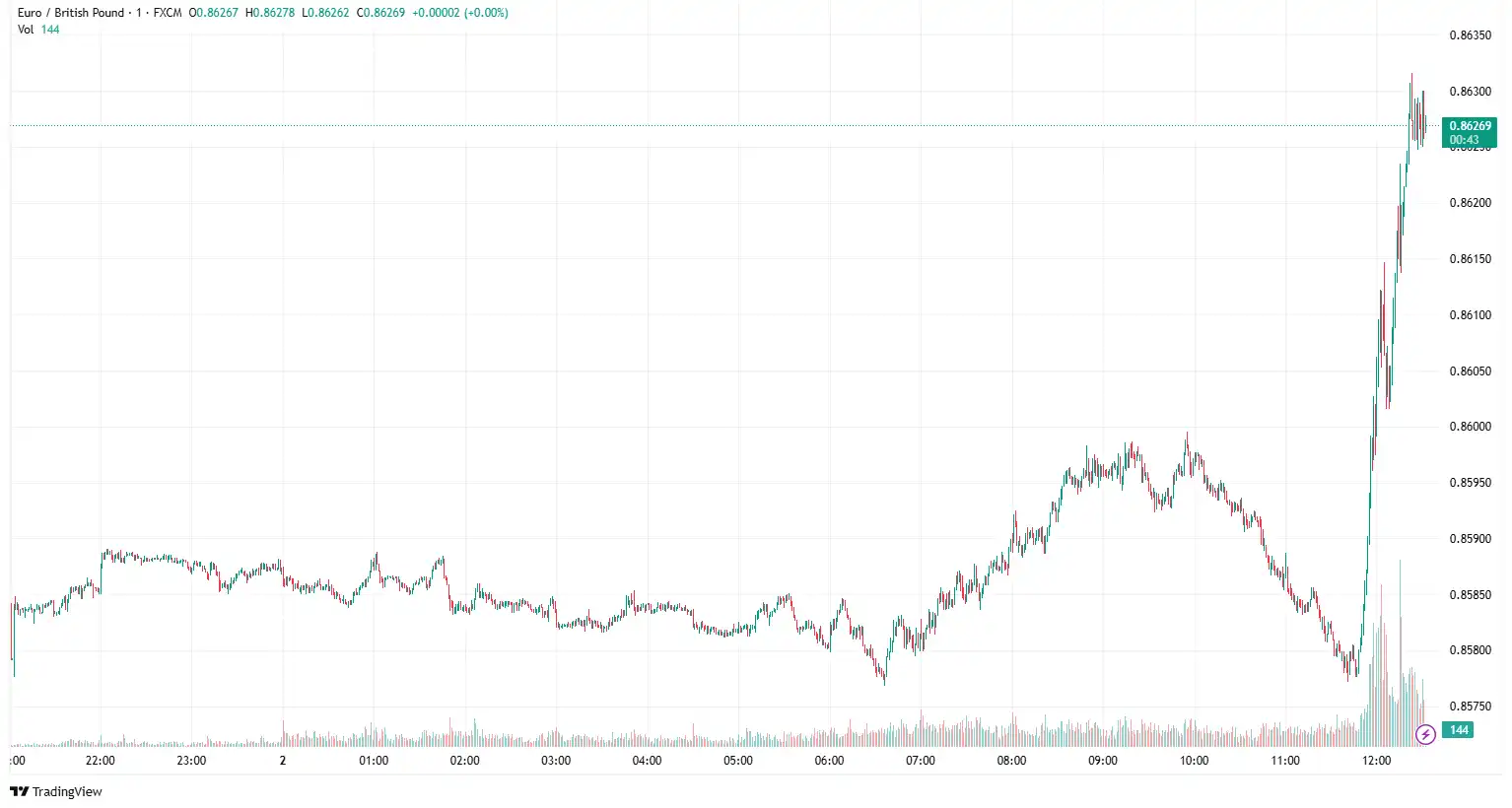
AUD/JPY Recovered as Trump Considers 35% Tariffs on Japan
AUD/JPY edged higher near 94.51, following US President Trump's recent threat to impose higher tariffs on Japanese imports, dampening the yen. On Tuesday, Trump stated that he is considering imposing an additional 30% or 35% tariff on Japan and will not extend the self-imposed July 9 deadline for the currently suspended reciprocal tariffs. He also expressed frustration over delayed US-Japan trade talks and raised doubts that they would reach an agreement with Japan. The latest Tankan Large Manufacturing Index rose to 13.0 in Q2 from 12.0 in Q1, exceeding the market forecast of 10.0. Furthermore, the Large Manufacturing Outlook stayed steady at 12.0 in Q2, exceeding the anticipated 9.0. On the policy front, the Bank of Japan's (BoJ) cautious approach to unwinding its ultra-loose policy has directed investors to hold their expectations for earlier interest rate increases. However, investors remain confident that the BoJ will continue with monetary policy normalisation, given that inflation has surpassed its target for nearly three years. Bank of Japan Governor Kazuo Ueda stated on Tuesday that although headline inflation has remained above 2% for nearly three years, underlying inflation stays below the target. Ueda further noted that any future rate increases will depend on the overall inflation trend, including wage growth and expectations. Additionally, BoJ's new board member Kazuyuki Masu mentioned on Tuesday that the central bank should not rush into raising interest rates due to various economic risks. Nonetheless, concerns about rising inflationary pressures in Japan continue to leave the possibility of a BoJ rate hike in 2025 open, particularly if trade risks stabilise.
On the other hand, weaker-than-expected domestic economic data continue to weigh on the risk-sensitive Australian dollar. Retail sales advanced by 0.2% month-on-month in May from a flat 0% in April (revised from -0.1%), well below market expectations of 0.4%. Meanwhile, building permits increased by 3.2% in May, compared to a previous decline of 4.1%, but fell short of the expected 4.8% increase. China's NBS Manufacturing Purchasing Managers' Index (PMI) rose to 49.7 in June, up from 49.5 in May, aligning with market expectations for the month. The NBS Non-Manufacturing PMI increased to 50.5 in June from 50.3 in May, meeting the forecast of 50.3. China's Caixin Manufacturing Purchasing Managers' Index (PMI) improved to 50.4 in June from 48.3 in May, surpassing the market forecast of 49.0.
Any significant progress on the US-Japan deal or US President Trump's comments on the tariffs against Japan could cause market volatility in the AUD/JPY exchange rate.
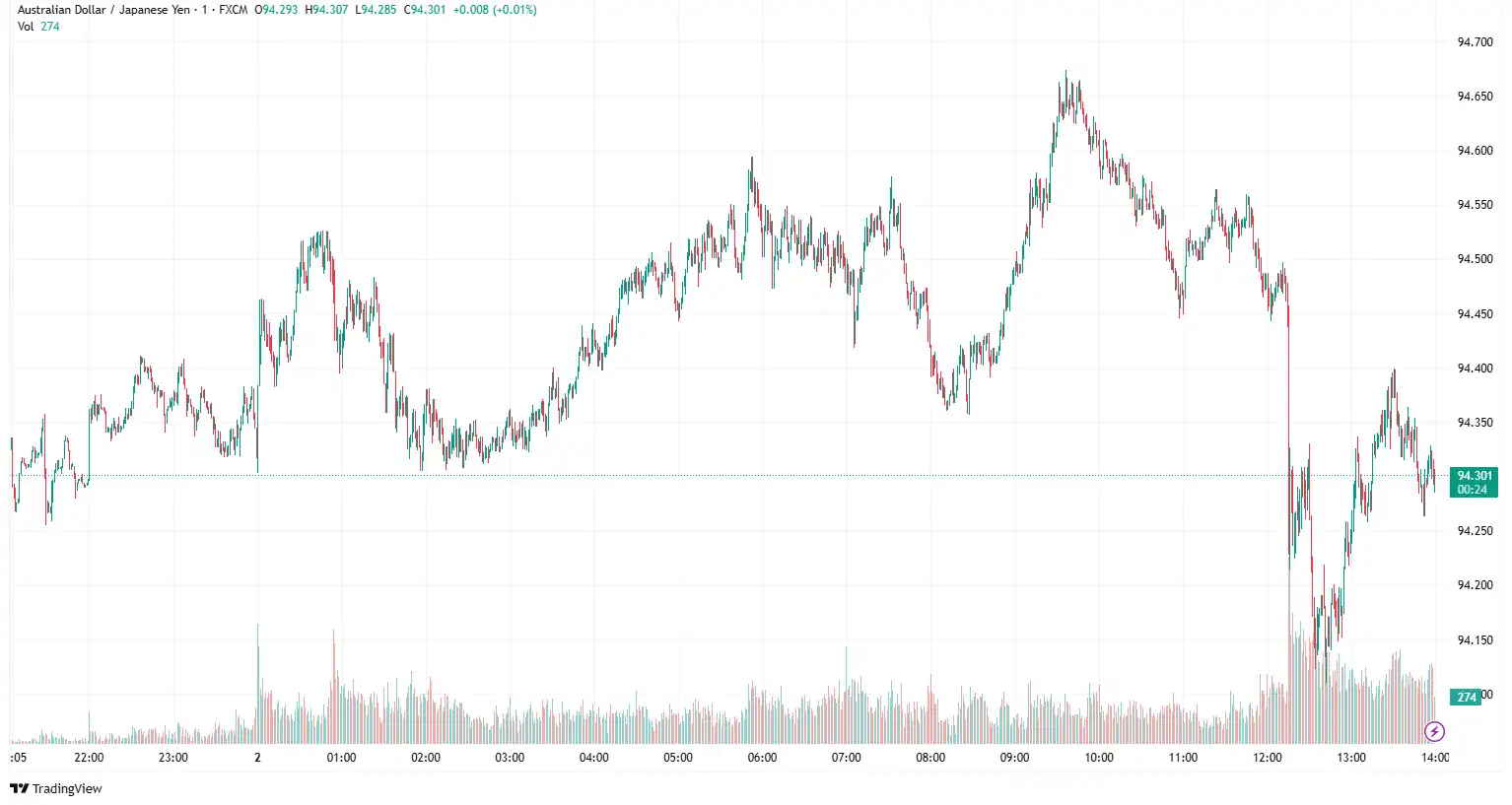
USD/CHF Falters Amid Renewed Deficit Worries
The USD/CHF traded near 0.7928 as a positive risk tone lowered demand for the safe-haven Swiss Franc. Retail sales remained flat in May, contrary to the expected 0.8% rise, with April's figures being revised downward. When adjusted for sales and holiday effects, retail consumption declined by 0.8% in May. A notable improvement in manufacturing activity offset weaker sales figures, as the SVME PMI increased to 49.6 in June from 42.1 the previous month, surpassing the forecast of 44.0. Switzerland's KOF Leading Indicator fell to 96.1 in June from 98.6 in May, falling short of the predicted 99.3 and marking the lowest level since October 2023 amid challenges, especially in manufacturing. Earlier this month, the Swiss National Bank (SNB) cut interest rates to 0%, citing easing inflation and signalling a potential move into negative rates if risks persist. The SNB's Q2 Bulletin warned that global trade risks could dampen growth, projecting GDP growth between 1% and 1.5% for the year. However, the hawkish tone from the SNB disappointed investors expecting rates to fall further into negative territory, which would have strengthened the CHF. SNB Governing Board Member Attilio Zanetti stated on Tuesday, "Negative interest rates are an option." He added, "We have all the necessary tools, even with zero interest rates," emphasising their capacity to respond.
On the greenback's front, dovish remarks from the US Federal Reserve (Fed) Chair Jerome Powell and rising fiscal worries could exert selling pressure on the US dollar. The US Bureau of Labour Statistics (BLS) reported that there were 7.769 million job openings on the last business day of May, according to the Job Openings and Labour Turnover Survey (JOLTS) on Tuesday. This is higher than the 7.395 million openings in April and also exceeded the market forecast of 7.3 million. In June, US manufacturing activity saw a slight acceleration, with the ISM Manufacturing PMI rising to 49.0 from 48.5 in May, surpassing analysts' expectations of 48.8. The Employment Index dipped slightly to 45.0 from 46.8 in May, indicating some challenges with payroll growth. Meanwhile, the Prices Paid Index, which tracks inflation, edged up marginally to 69.7 from 69.4. Additionally, the New Orders Index decreased to 46.4 from 47.6. Fed Chair Jerome Powell stated on Tuesday that the US central bank will wait for more data before considering monetary policy easing, although he did not exclude a rate cut at the July meeting. US Treasury Secretary Bessent told Fox News he expects the Federal Reserve to lower interest rates before autumn, with a firm commitment to cut rates by September at the latest.
In today's session, the ADP Non-Farm Employment Change report for June will be a key driver for the USD/CHF exchange rate.
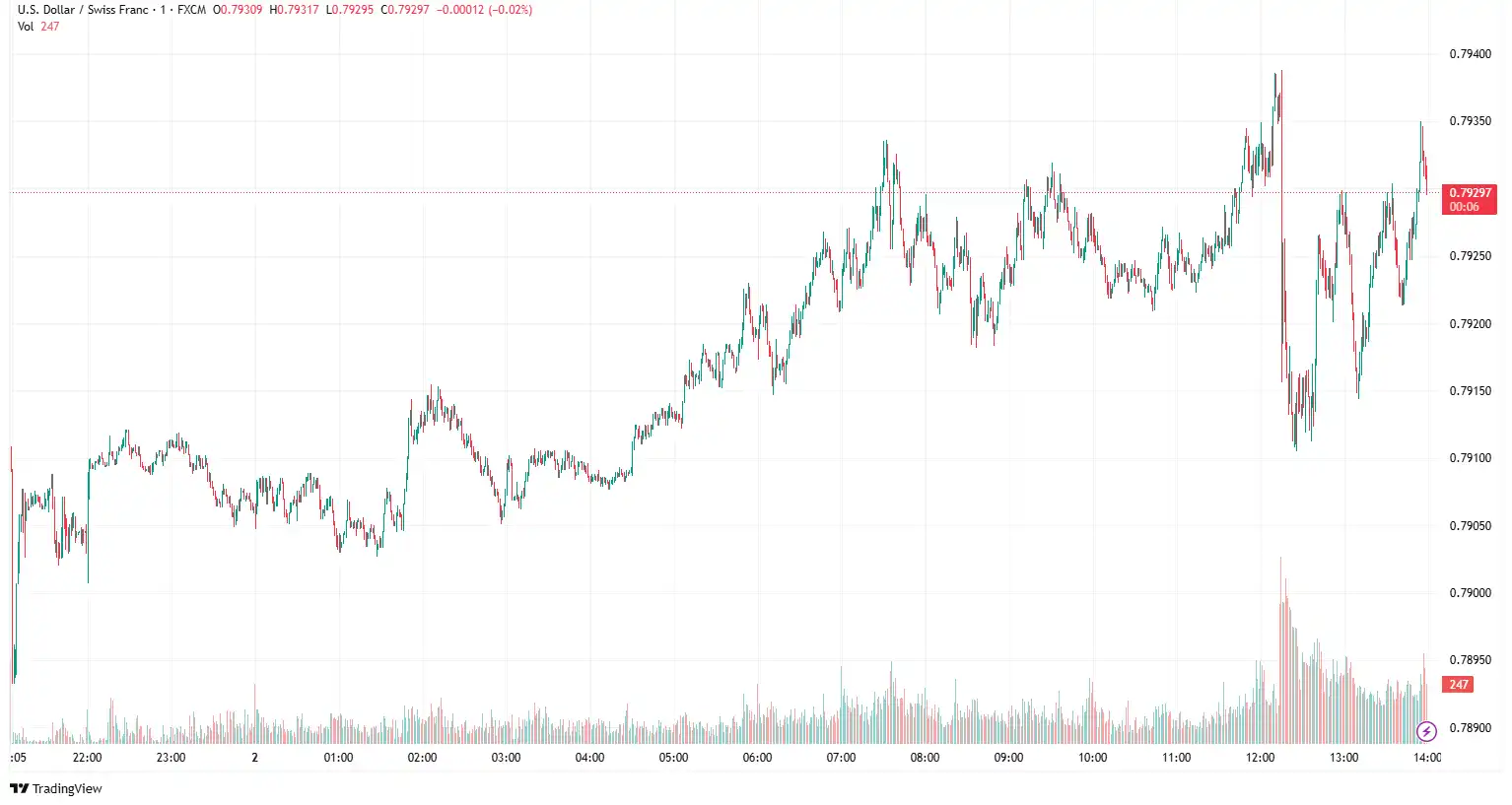
EUR/CAD Sinks Amid Trade Tariff Jitters
EUR/CAD declined to 1.6069 as the commodity-linked Canadian dollar (CAD) struggles due to subdued crude oil prices, driven by signs that OPEC+, the Organisation of the Petroleum Exporting Countries and its allies, including Russia, will proceed with its planned output increase in August. Canada suspended its plans to introduce a new digital services tax targeting US technology firms just hours before it was due to take effect on Monday, in order to advance stalled trade negotiations with the United States. On Monday, White House Economic Adviser Kevin Hassett stated that the US would immediately commence trade talks with Canada after the latter eliminated its digital services tax, which targeted US technology companies. Canada's Chief Trade Negotiator and Ambassador in Washington stated in an interview with the Globe and Mail early Wednesday that "Canada is still aiming to get all of Trump's tariffs lifted as part of a deal with the White House later this month." He also added that he remains confident that the country can secure the cancellation of the levies as part of negotiations for a new economic and security partnership. Prime Minister Mark Carney has set a self-imposed deadline of July 21.
In the Eurozone, the seasonally adjusted unemployment rate rose to 6.3% in May 2025, up from 6.2% in April but down from 6.4% in May 2024. According to Eurostat, 13.052 million people were unemployed in the EU, including 10.830 million in the euro area. Italy's unemployment rate rose sharply to 6.5% in May from an upwardly revised 6.1% in April, compared to the forecasted 6.0%, marking the highest level since June last year. German unemployment increased by 11,000 in June, below the expected 15,000 and significantly less than May's 34,000 rise. The jobless rate remained stable at 6.3%, against forecasts of a rise to 6.4%. Manufacturing activity improved slightly in June, with the PMI rising to 49.5 from 49.4 in the previous month. While still in contraction, these figures exceeded expectations of remaining at 49.4 and marked their highest level in three years. The HCOB Eurozone Manufacturing PMI increased to 49.5 in June from 49.4 in May, reaching its highest point in nearly three years. Regarding inflation, the headline Consumer Price Index (CPI) rose to 2.0% year-on-year in June, up from 1.9% in May and meeting expectations, aligned with the European Central Bank's (ECB) target. Core inflation stayed steady at 2.3%, the lowest since January 2022.
European Central Bank (ECB) Governing Council Member Mario Centeno stated on Wednesday, "I'm still cautious, following all available data," expressing concern about investment in the Euro area. He also mentioned that a strong euro would attract more investors to Europe. European Central Bank (ECB) Chief Economist Philip Lane stated on Tuesday that the central bank needs to be ready to respond to any fluctuations in the Consumer Price Index (CPI). He mentioned that the next five years are likely to be volatile, with 10% tariffs included in the ECB's baseline projection. Meanwhile, European Union (EU) Commissioner Maroš Šefčovič plans to travel to Washington to meet with US Trade Representative Katherine Tai and Secretary of Commerce Gina Raimondo to advance tariff negotiations. European Central Bank (ECB) policymaker Olli Rehn stated on Wednesday that the ECB should be cautious of the possibility that inflation remains persistently below the 2% target. He also pointed out that joint European borrowing for defence funding could strengthen the euro by establishing a new safe asset.
Broader market sentiment regarding crude oil prices, Eurozone unemployment, and a speech from European Central Bank (ECB) President Christine Lagarde will influence the EUR/CAD exchange rate.
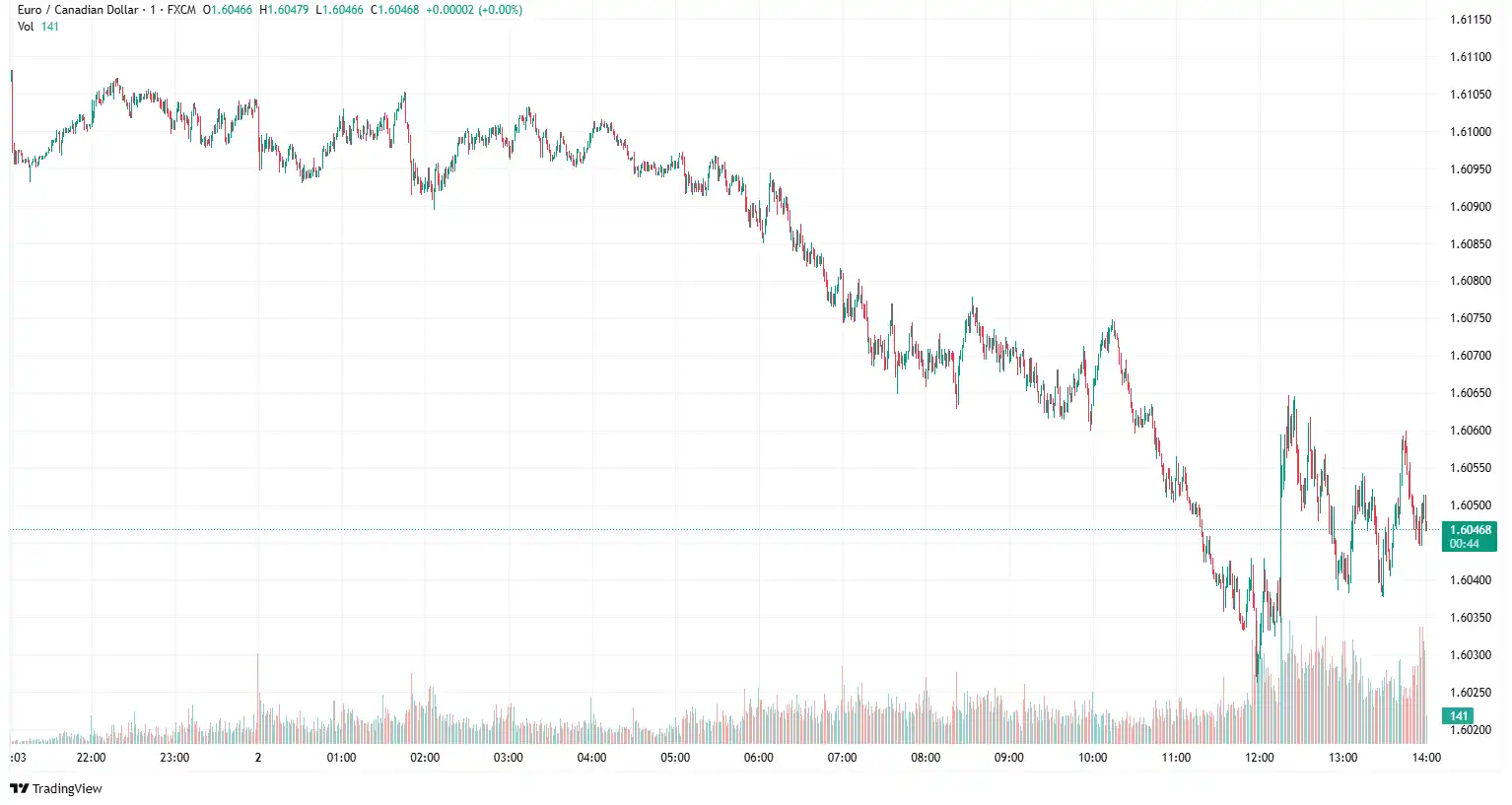
Stay Ahead in the Currency Game
Whether you're a daily FX trader or handle international transactions regularly, our 'Currency Pulse' newsletter delivers the news you need to make more informed decisions. Receive concise updates and in-depth insights directly in your LinkedIn feed.
Subscribe to 'Currency Pulse' now and never miss a beat in the currency markets!
Ready to act on today’s insights? Get a free quote or give us a call on: +44 (0)20 7740 0000 to connect with a dedicated portfolio manager for tailored support.
Important Disclaimer: This blog is for informational purposes only and should not be considered financial advice. Currency Solutions does not take into account the investment objectives, financial situation, or specific needs of any individual readers. We do not endorse or recommend any specific financial strategies, products, or services mentioned in this content. All information is provided “as is” without any representations or warranties, express or implied, regarding its accuracy, completeness, or timeliness.




